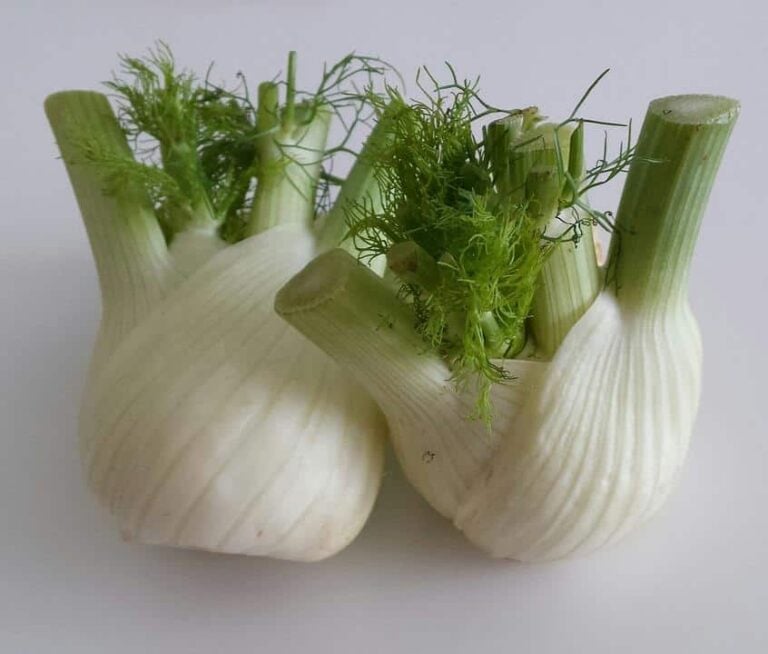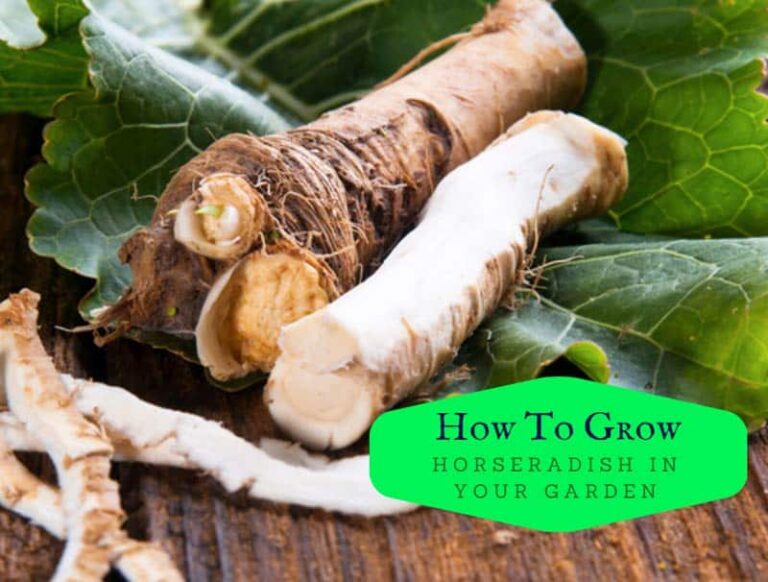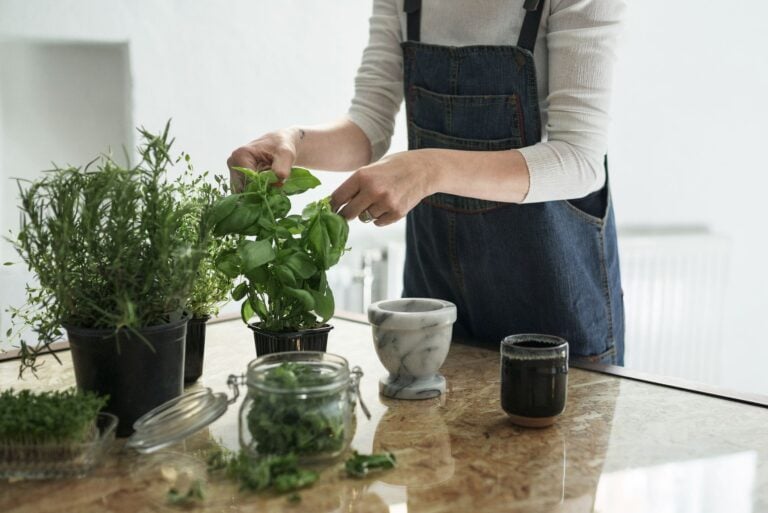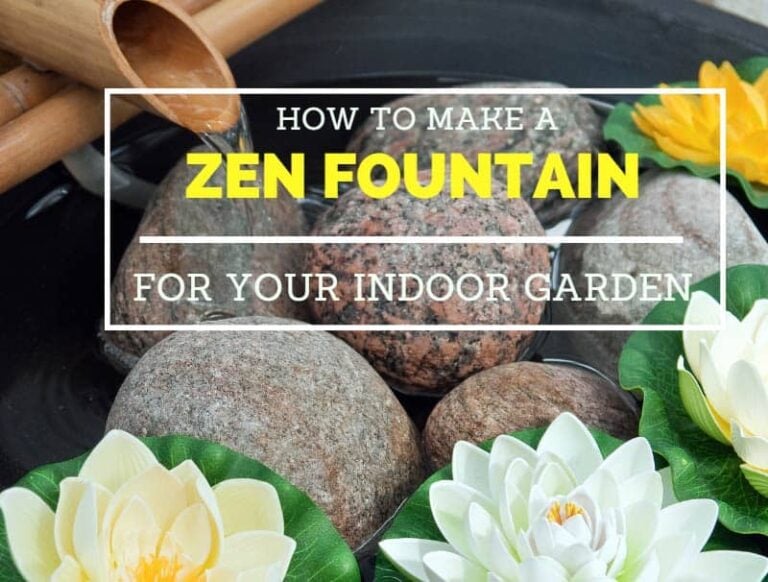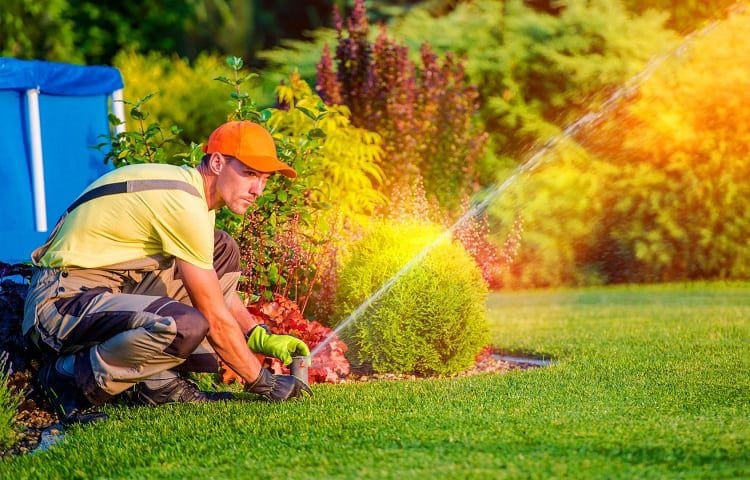Improve Your Garden With These Rock Garden Ideas
When you’re creating a garden, you aren’t limited to plants. A rock garden uses stone and other natural materials to add color and texture to a garden area. Rock gardens tend to be lower maintenance than vegetable or other types of garden. Plus, since rocks can handle both high and low temperatures, they tend to look great all year around.
Circular Rock Garden
You don’t have to live in a naturally rocky area, such as the desert or mountains, to create your own rock garden. You can build your own by stacking stones together to create a shape, then filling the shape in with soil and rocks.
The gardener who created the rock garden above went with a circular shape, but it could have just as easily been a square or rectangle. The top of the garden is finished off with a scattering of small, crushed stones as well as larger rocks pushed into the soil at an angle.
When choosing plants for your garden, pick varieties that favor rocky soil. Plants that have finicky or delicate roots won’t be able to thrive in rocky areas. If you want a bit of color in the garden, choose a flowering plant such as Aubrieta or Catchfly.
Succulent Rock Garden
Succulents need soil that drains well, and rocky soil can be particularly well draining. It just makes sense for rocks and succulents to go hand in hand in a garden. The garden in the pin above makes great use of a variety of textures.
The leaves of the succulents are soft, while the sand adds a bit of grittiness. The smoothness of the round stones is a nice contrast to the rough texture of the sand and also works well in contrast with the leaves of the plants.
Zen Garden
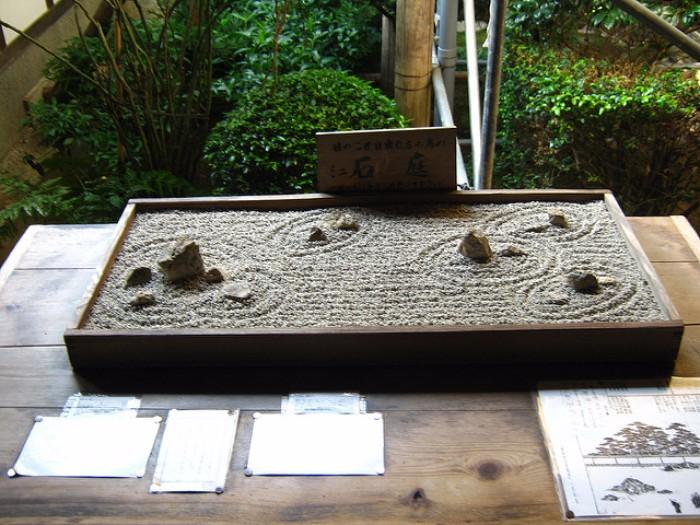
Zen gardens date back to the 14th century. Rocks play an important role in the design of a Zen garden, as Buddhist monks would rake them to create ripples or the appearance of flowing water.
Although a Zen garden can be large and outdoors, you can just as easily create a miniature version for use indoors on a table top. With a small, shallow container and a collection of crushed stone, you can make your own Zen garden to help calm your mind in times of stress.
Bedrock Gardens
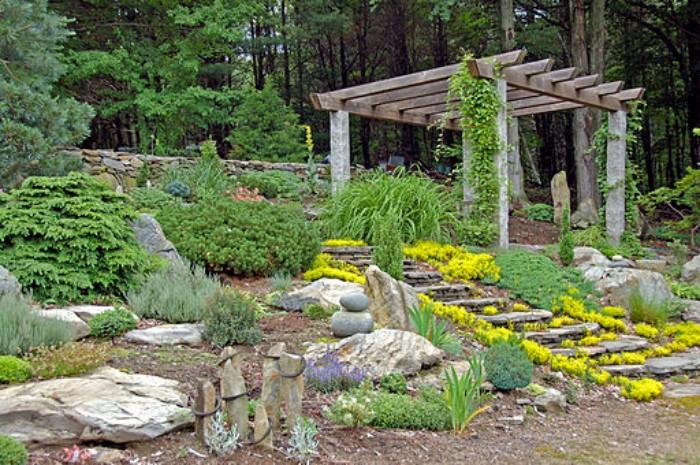
The rock garden above is from the Bedrock Gardens in New Hampshire. It’s one of the first areas of the gardens to bloom in the spring.
You can use the Bedrock Gardens’ rock garden as inspiration for your own garden, if you have the space. The garden features a number of large rocks and statues, interplanted with small, brightly colored plants. Flowers in the garden include irises, which bloom in early spring, and day lilies, which bloom throughout the summer.
Flower Rocks
It’s not uncommon for rocks to be used in a garden to create images or texture. In the pin above, the gardener has arranged a series of round, smooth rocks into daisy shapes, fitting for a small flower garden.
The rocks themselves also create a drainage path for water. When it rains, water travels down the drainpipe, away from buildings. It’s able to provide the irises and other plants on either side of the rocky path with plenty to drink.
Cactus and Air Plants on a Rock
As the video above from Garden Answer shows, a large rock can make a great substitute for a planter, especially if you’re making an arrangement with cactus, succulents and air plants.
The gardener in the video attaches the air plant to the rock using hot glue, then fills the crevices in the rock with soil for the succulents. She uses moss, hot glued in place, to create a barrier to keep the soil from tumbling out of the crevices.
If you’re worried about hurting an air plant by gluing it down, don’t be. The plant gets all the nutrients it needs through its leaves, from the air. As long as you don’t put glue on the leaves, the plant should be perfectly fine. Remember to mist it every so often to help it get enough moisture.
Mini Cacti Garden
Cacti can be ideal plants for a rock garden, because they prefer drier conditions. The video above shows you how to make a small planter full of cacti and gravel. She starts with a stone planter that doesn’t have a hole in it, which means she has to drill her own drainage hole. Even if you don’t end up planting the garden, watching the video can give you a few pointers for drilling through hard materials.
The video also gives you some useful tips for transplanting cacti. Although watering plants before you transplant them is usually recommended, the opposite is true for succulents and cacti. You don’t want to introduce any water, as the moisture can lead to root rot if the roots are damaged during transplanting.
Lavender Rock Garden
If there’s another plant that goes perfectly with stones and rocks, it’s lavender. As a plant from the Mediterranean area, lavender thrives in dry, rocky soil. It’s great for tucking into a rock wall or for planting alongside of a pile of stones.
The contrast between the spiky leaves of lavender and its spikes of bright purple flowers also looks particularly good next to a pile of jagged rocks or smooth stones. You don’t need a lot of plants to make a statement in a lavender rock garden. According to Bonnie Plants, just a single plant can be attention grabbing or eye catching enough. You can also try planting lavender in a rock garden alongside other flowering plants that have similar watering requirements, such as poppy.
Photo Credit
Photo by brewbooks licensed under CC BY-SA 2.0
Photo by ElCapitanBSC licensed under CC BY-SA 2.0
Photo by Zipity11 licensed under CC BY-SA 3.0

